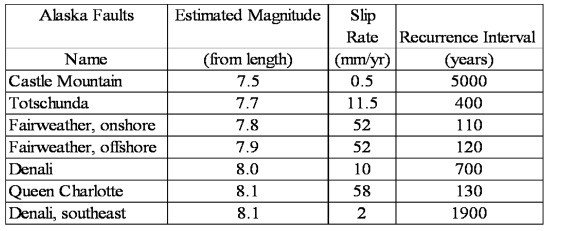Analyze the table below that shows USGS data for earthquake zones in Alaska and use it to answer this question.  What is the trend when comparing slip rate to estimated magnitude?
What is the trend when comparing slip rate to estimated magnitude?
A. The larger the slip rate the larger the estimated magnitude.
B. The larger the slip rate the smaller the estimated magnitude.
C. There is no obvious slip-magnitude relationship.
Answer: C
You might also like to view...
Which of the following is NOT true about tornadoes?
A. They often form in association with cold fronts and squall lines B. Dry continental tropical air and a strong jet stream aloft increase the chances of their development C. Most of them occur in the United States D. More damage occurs from a severe drop in pressure, rather than winds, so it is advisable to crack open some windows during a tornado
Newton's law of cooling applies to objects that are
A) cooling. B) heating. C) both A and B D) none of the above
The carbon and nitrogen cycles are the largest of all the ____________ cycles. Fill in the blank(s) with the appropriate word(s)
What is the most environmentally diverse and continually destructive natural hazard in the United
States? a. earthquakes b. volcanoes c. river floods d. hurricanes e. landslides